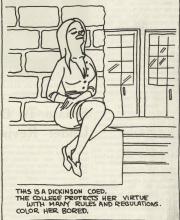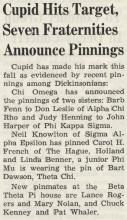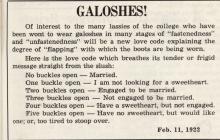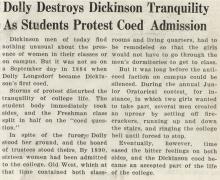Color the Co-ed Bored
The Dickinsonian began a series of illustrations meant to function as a coloring book. In one of these illustrations, a woman in a tight skirt leans against a wall and appears to be either bored or asleep. The caption beneath this illustration indicates how Dickinson students may have felt about the rules and regulations governing female students: "This is a Dickinson Coed. The college protects her virtue with many rules and regulations. Color her bored."








